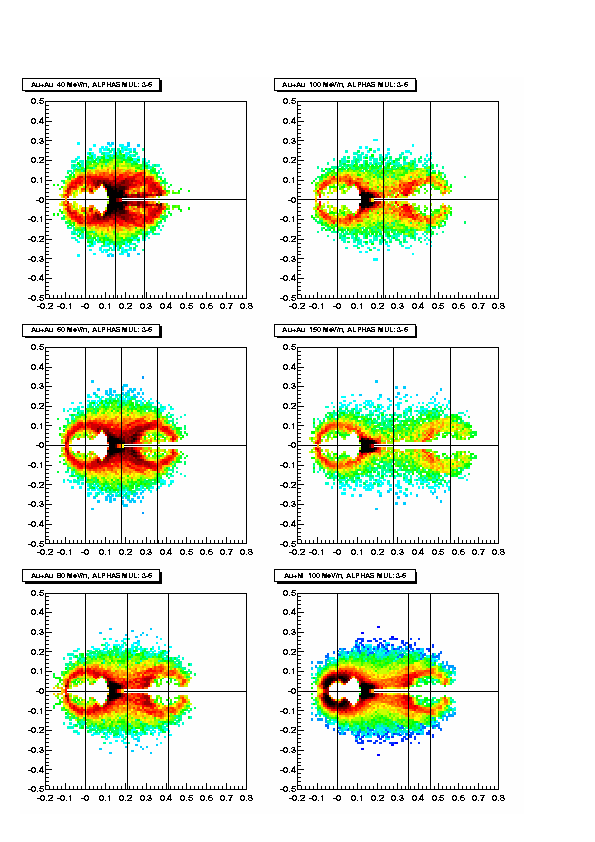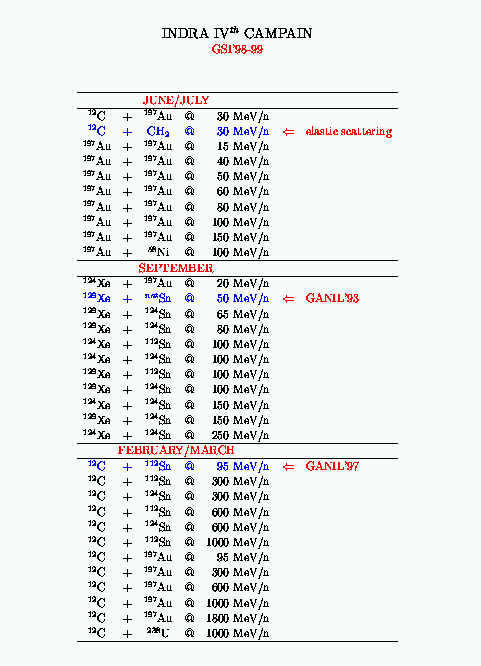
ENERGY CALIBRATION OF CSI DETECTORS
INDRA IVth CAMPAIGN, GSI'98-99
J. Lukasik
Rauischholzhausen - GSI, Oct. 4-8, 1999
Survey of reactions studied during the IV-th campaign.
The reaction Xe+Sn
@ 50 MeV/n was repeated (GANIL'93)
in order to utilize the I-st campaign calibration. The I-st campaign calibration
is used after linear scaling of the global spectra from IV-th campaign
to those of the I-st one. This "GANIL-scaled calibration" can be sketched
as follows:
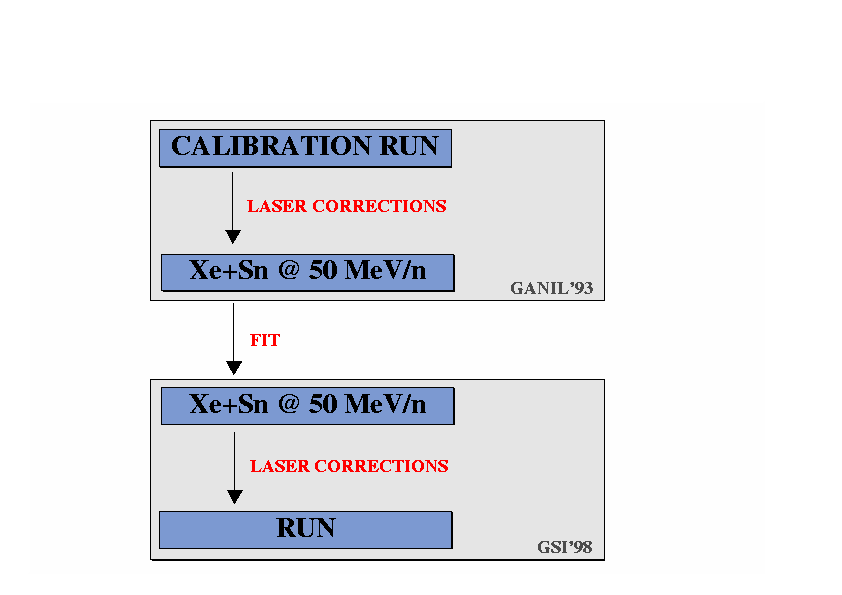
The elastic and inelastic protons from the reaction C+CH2 @ 30 MeV/n are used to calibrate rings 6-11 (12?). This calibration serves as a reference and check for the GANIL-scaled calibration.
The reaction C+Sn @ 95 MeV/n was repeated (GANIL'97) and will be used as an additional check of the scaled calibration.
An example of the quality of the fits for the modules of Ring 2:
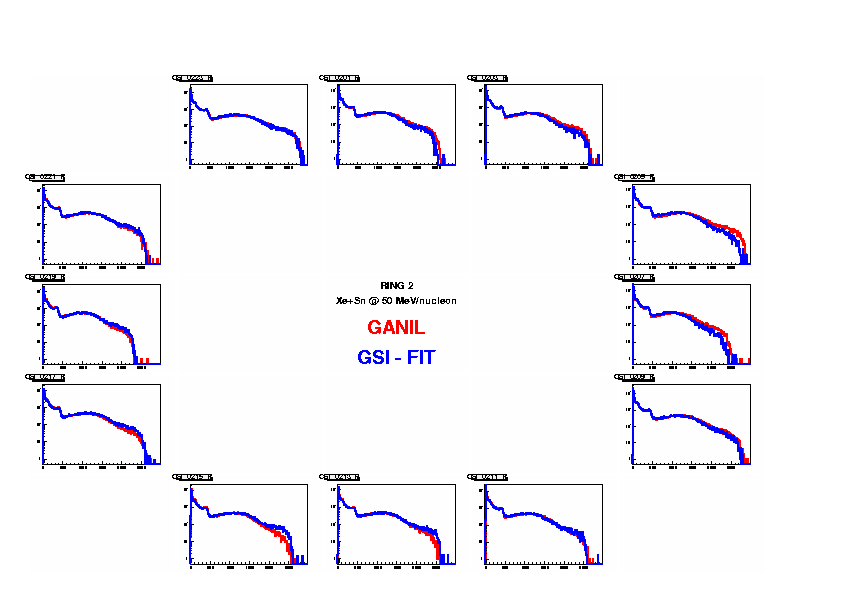
Red histograms correspond to original spectra from the I-st campaign. The blue ones are the scaled spectra measured at GSI. The fits were done up to the upper limit of alpha particles (sharp edge around 500 channels). The observed discrepancies for heavy fragments result most probably from different beam alignments in both campaigns. For rings 2-9 the fits were done on the Rapide spectra, whereas for rings 10-17 the total light spectra were adjusted. The overall quality of the fits is of the order of 0.5-1.5%.
Some remarks:
Ring/Module
08/07
- low statistics in GANIL spectrum.
06/15,16 - no GSI spectra.
12/14 - no GANIL
spectrum.
13/13 - no GSI
spectrum.
13/22 - very
bad fit, only tails fitted - double spectra in Sept.
16/02 - no GSI
spectrum - module with etalons :-(
16/03 - very
bad fit, only tails fitted - double spectra in Sept.
GANIL-scaled calibration applied to protons from peripheral collisions
(multiplicities 4-10, spill-on) of Xe+Sn @ 50 MeV/n. Energy spectra for
one module per ring (rings 2-17).
Red histograms - GANIL'93 spectra, black ones - GSI'98.
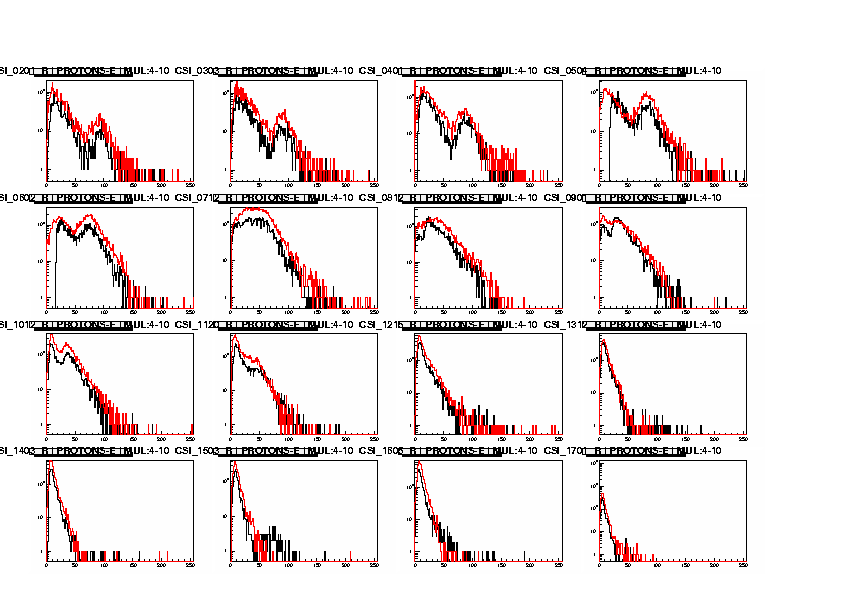
Same as above but for alpha particles.
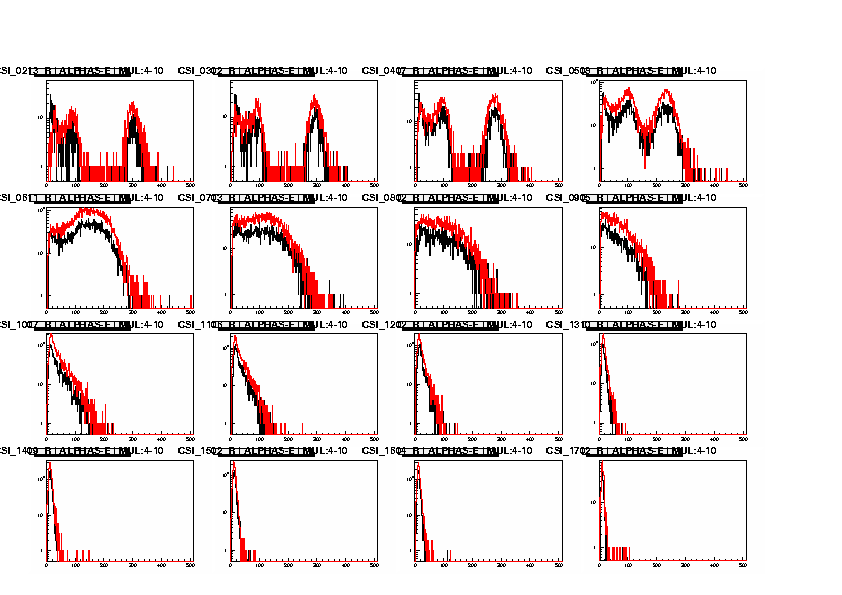
Mean values of energy spectra of protons (see above) for all modules
of rings 2-17. Lower and upper thresholds applied to energy spectra.
Red points - GANIL'93 spectra, black ones - GSI'98.
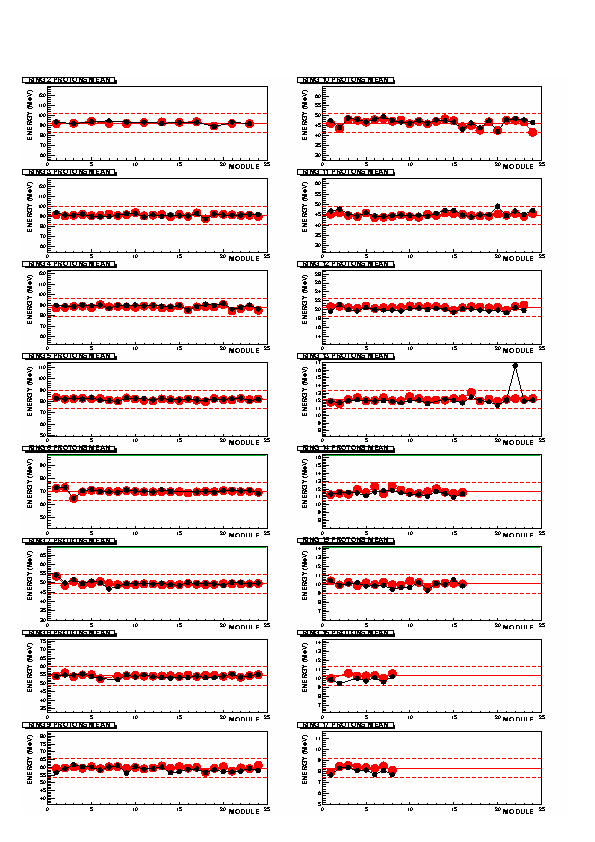
Same as above but for alpha particles.
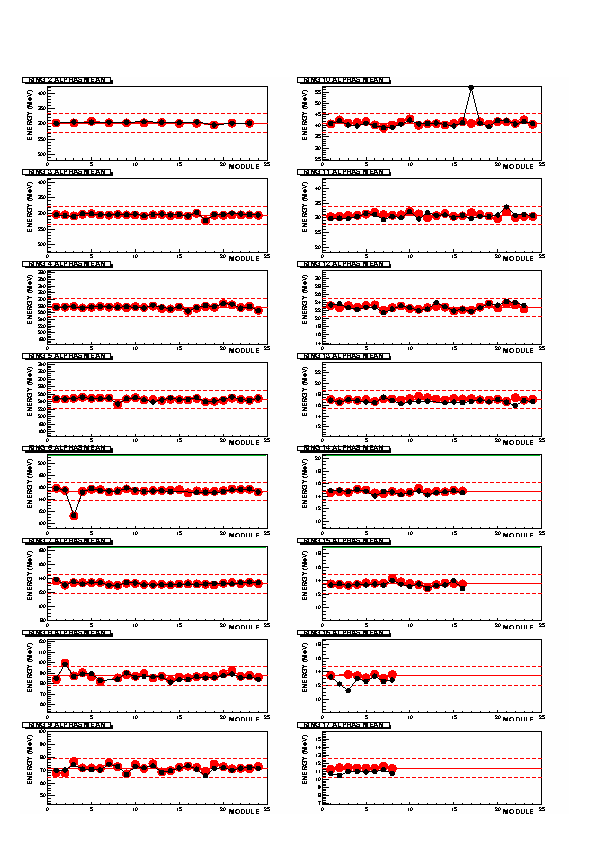
Obviously, some modules need a closer look...
An example of a spill profile. Run 4635 (Xe+Sn @ 50 MeV/n).
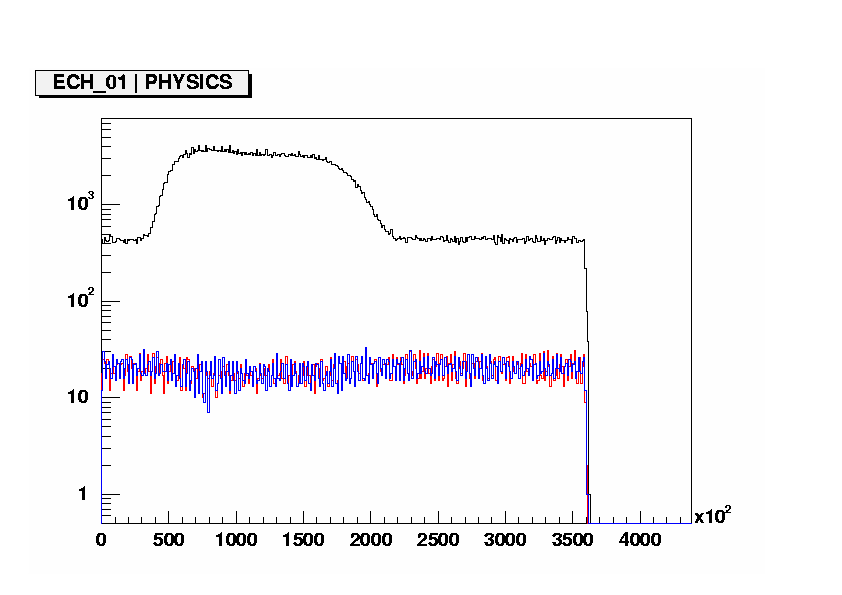
X axis - time in 10-5 s,
Y axis - number of events.
Black histogram - total number of events, red - pulser events, blue
- laser events.
This particular run consists of:
69.3 % - physics events,
28.0 % - cosmics events,
1.3 % - pulser events,
1.3 % - laser events,
0.1 % - veto halo events.
Discrepancies between calibrations of identified protons and alphas
for the most backward rings may result from different contribution of cosmic
rays to the measured spectra, even if the analysis is restricted to "spill-on"
events.
This has to be checked...
Schematic layout of the laser-based stability
control system of INDRA:
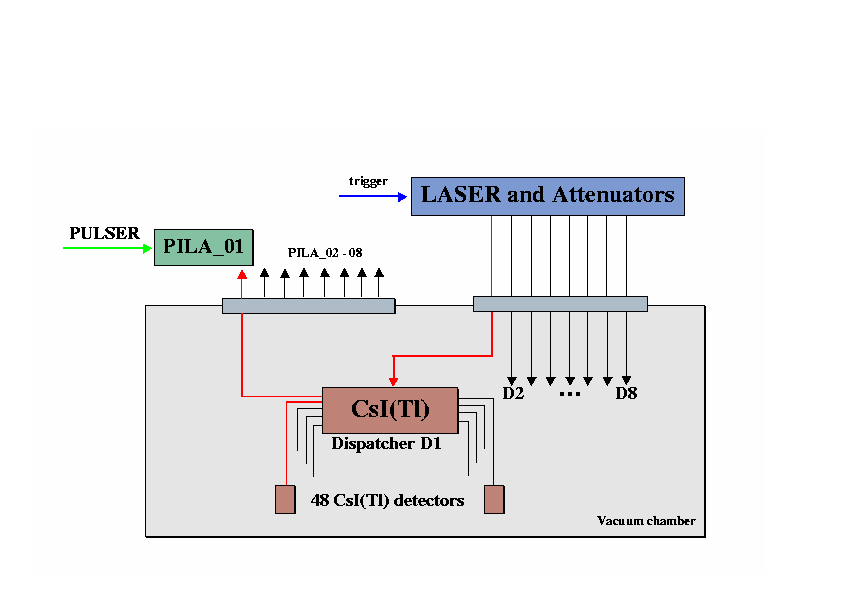
An example of laser+PILA based stability control for module CSI_0515_R:
JUN
SEP
FEB
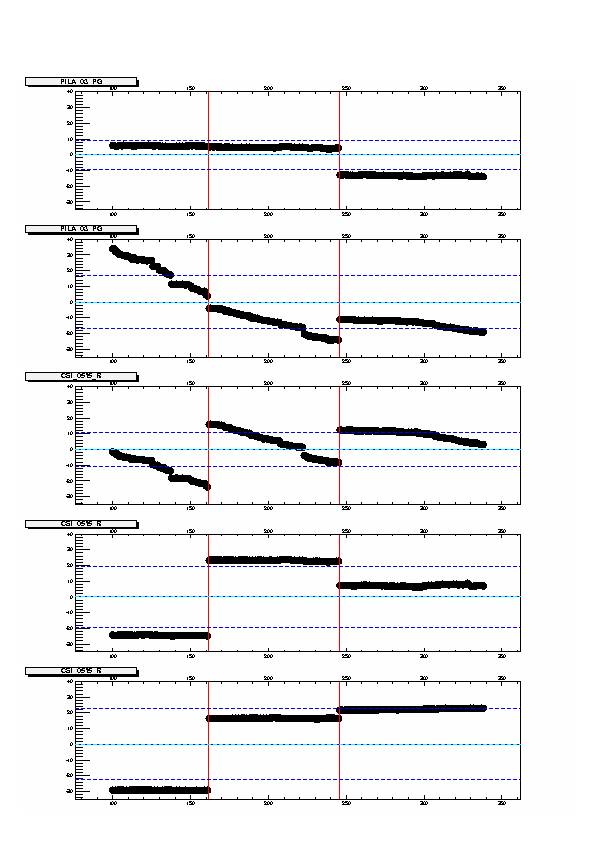
X axis - run (~time),
Y axis - deviation from the mean value in %.
The above panels present, from the top:
- mean values of the pulser peak position in PILA_03 (PILAPULSER),
- mean values of the laser peak position in PILA_03 (PILALASER),
- mean values of the laser peak position in CSI_0515 (CSILASER),
- the ratio:
CSILASER
------------------------------
PILALASER / PILAPULSER
- and the ratio:
CSILASER
--------------
PILALASER
More information and summary of CSI stability can be found here .
Comparison between calibration based on the C+CH2 @ 30 MeV/n
reaction and GANIL-scaled calibration applied to June subcampaign using
laser corrections and PILA information (division by PILA). All modules
of rings 6-11 are presented:
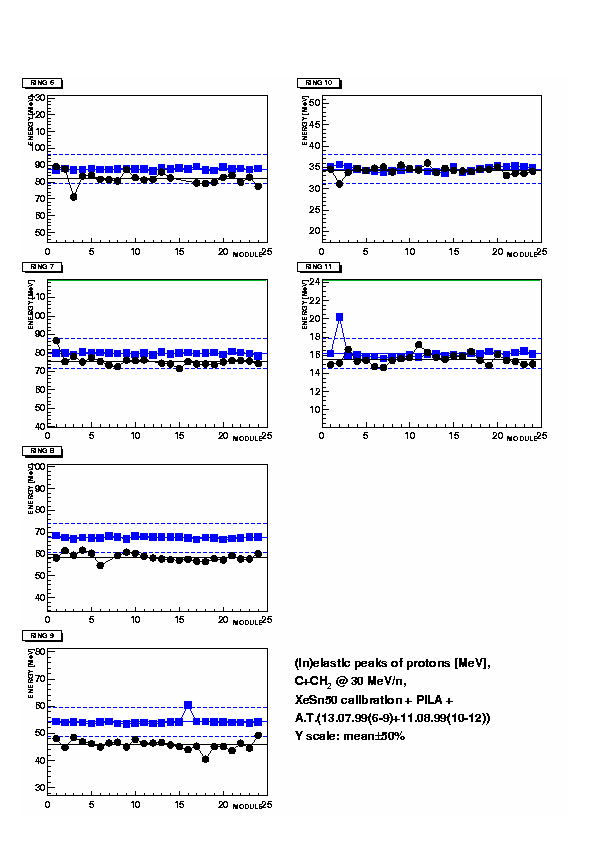
Y scale
- mean +/- 50%.
Blue dashed lines - mean +/- 10%.
Blue squares - mean energy of the elastically+inelastically scattered
protons in C+CH2 reaction.
Black circles - GANIL-scaled calibration with PILA-laser corrections
applied to proton peaks.
Systematic deviations, correlated with a given PILA or dispatcher, especially for rings 8-9 imply that the global reference was somewhere lost between subcampaigns. PILAs do perfect job within subcampaign, however, PILA based laser corrections are unable to correctly describe the gain differences between subcampaigns.
To overcome this problem, laser corrections
based on the "best module" are proposed (PILA replaced by the best module).
Best module is defined as the most stable CsI detector chosen for the whole
IV-th campaign - one per ring or dispatcher. The best modules were selected
using stability criterium based on PILA information.
The gain correction factor for a given run is calculated now in the
following way:
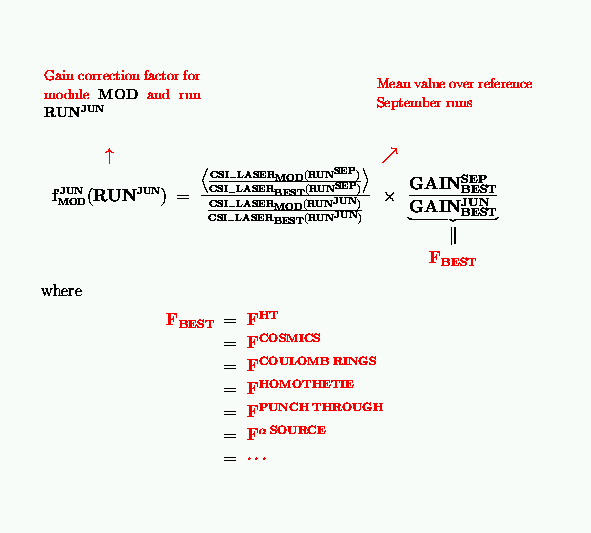
Here, the double ratio tracks the instabilities within subcampaign
(plays a role of division by PILA) while FBEST
accounts for the gain difference for the best modules in September and
June (February) subcampaigns. FBEST
value
can be obtained from various sources:
Relation between the high voltage (HT) and the gain of the photomultipliers is discussed in a separate document
"Coulomb Rings" of alpha particles for the best modules of rings 1-5:
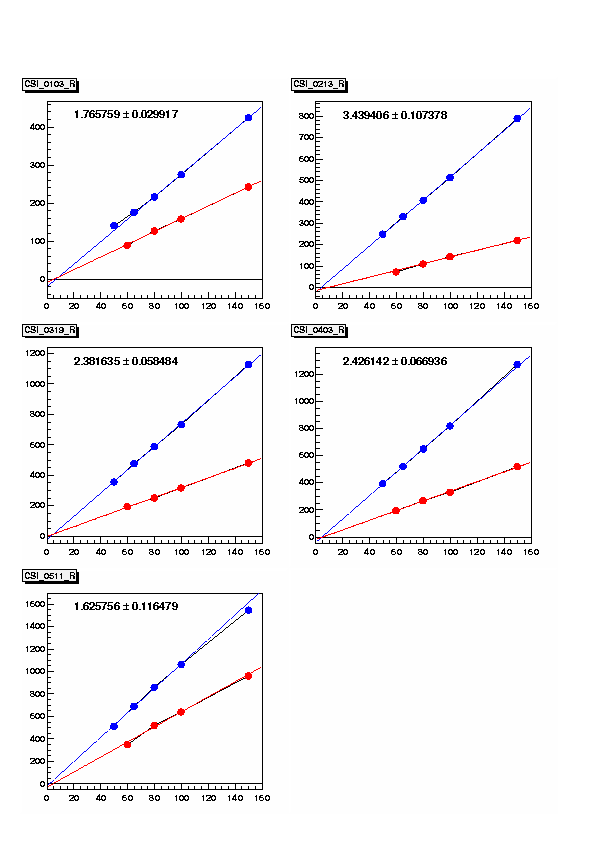
X axis - beam (or just alpha particle) Energy/nucleon (MeV),
Y axis - position of the center of the alpha Coulomb ring in Rapide
channels, CH_R - see below.
Blue points - values for Xe+Sn reactions (SEP),
Red points - values for Au+Au reactions (JUN).
To extract the centers of the Coulomb rings only peripheral collisions
were used (MULT<= 10).
The numbers inside panels denote the ratio of the "blue/red" lines
related to the corresponding "SEP/JUN" gain ratios.
This method gives at the same time the energy calibration of alpha particles, which may be very useful for Ring 1, which has not been calibrated before, and can also serve as an independent check of the scaled calibration.
The principle of the method is sketched below:
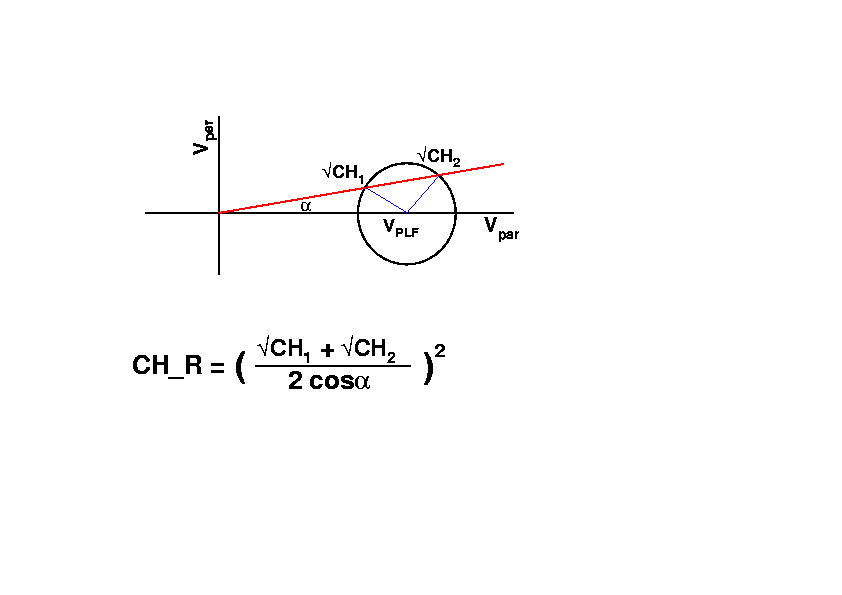
First the two channels CH1 and CH2 are located
for a given ring (at the angle alpha). They correspond to 2 peaks of alpha
particles evaporated from the excited PLF in peripheral collision. These
channels allow, from simple geometrical considerations, to extract the
channel corresponding to the middle of the Coulomb circle - CH_R, or to
the PLF velocity VPLF. Assuming low energy loss, in the first
approximation one can associate CH_R to the beam energy/nucleon.
The
results using the "best module" laser corrections. Comparison with the
C+CH2 calibration (blue squares as before):
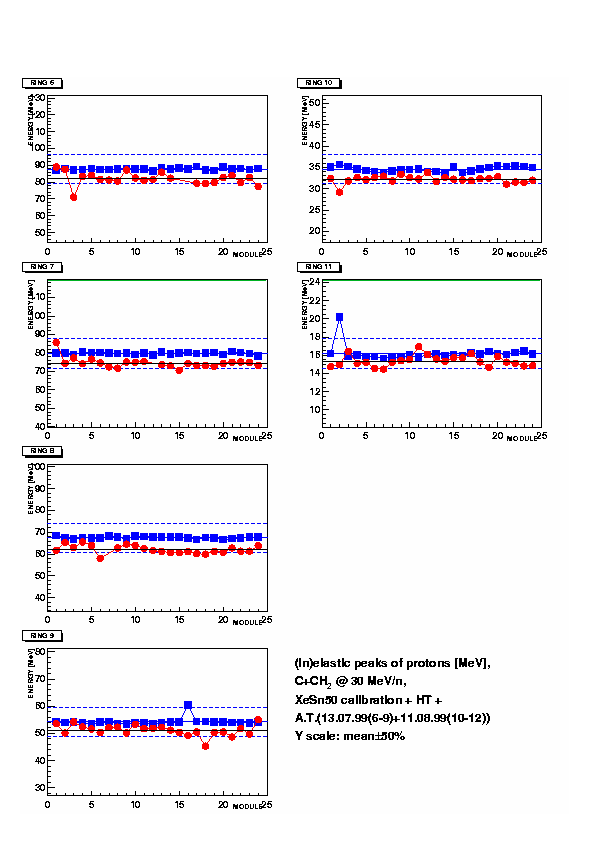
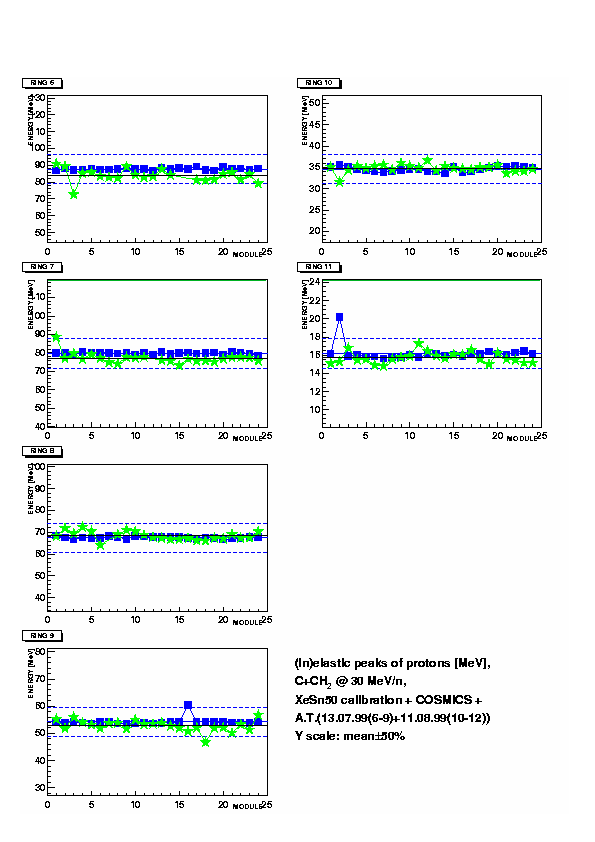
The agreement is almost perfect.
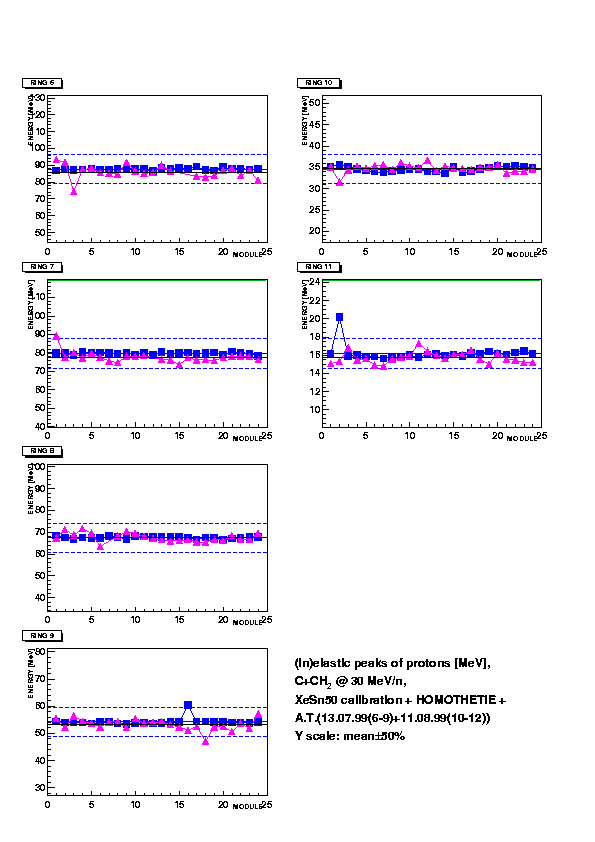
Invariant cross sections of alpha particles for peripheral (MULT<=
6) Xe+Sn reactions (September). Only CsI information is taken into account.
GANIL-scaled calibration is applied:
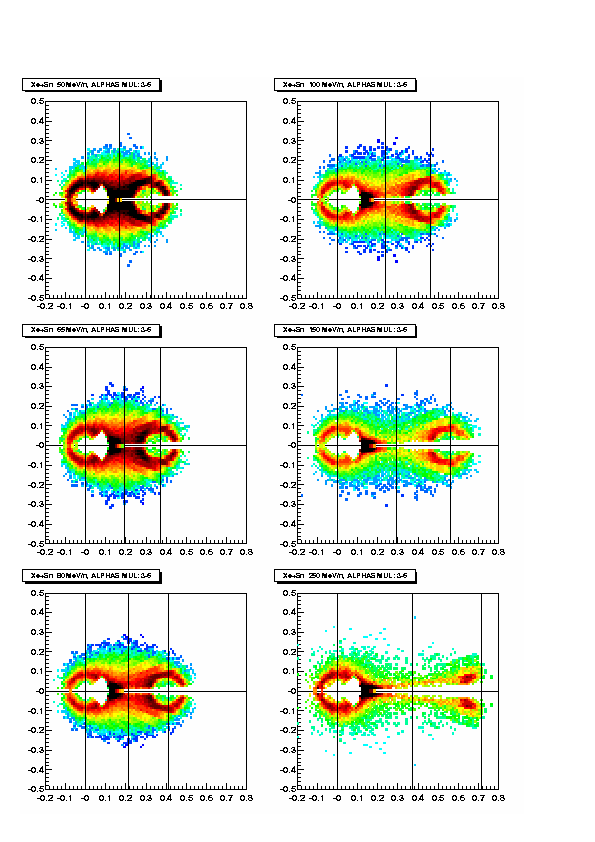
X axis - rapidity,
Y axis - pperp/(m0c2).
The vertical lines correspond to target, CM and projectile rapidities.
For 250 MeV/n reaction the limits of INDRA energy acceptance are reached
(punch-through) for the forward rings.
Same as above but for Au+Au (Au+Ni) reactions (June). The GANIL-scaled
calibration + COSMICS reference are applied:
